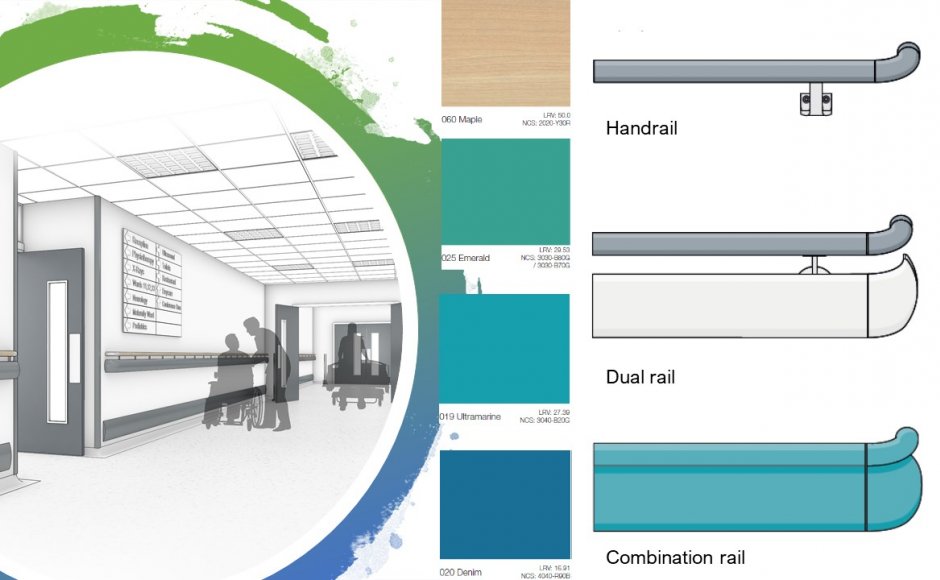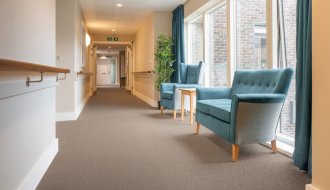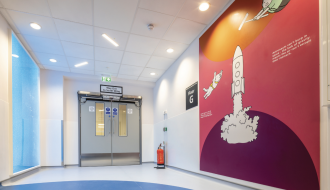The requirements for handrails are both aesthetic and practical. They refer to balance support often in the case of level differences between walking surfaces. It is also recommended that corridors be provided with handrails on at least one side of the walls, especially in elderly care, habilitation and rehabilitation. The requirements in the building standards are that the handrails should be easy to grip.
However, handrails are a critical area when it comes to spreading infection. All surfaces that we touch with our hands require basic hygiene routins. They are by far the most important measure to prevent the spread of infection. Daily cleaning, in healthcare environments up to twice a day mechanical cleaning. This is done with disinfection detergent.
Therefore, it is important to have a surface layer that can withstand alcohol and other cleaning chemicals and that it is smooth so that bacteria and viruses cannot hide anywhere.
Gradus wide range of handrails have these functional requirements and offer a comfortable, smooth, continuous grip that is not cold to touch and can withstand harsh chemicals. The tested surface layers are available in four options:
-SHR40P Aluminum with PVC u-finish in 32 different colors
-SHR40W Aluminum with wood effect in 5 different wood structures
-SHR40S Silver anodized aluminum
-SSHR42 Stainless steel
If the handrails are needed to be jointed - tight, good-looking joints are created with a special reveal to inhibit bacterial growth.
You can also combine the handrails with the function to protect the walls by choosing Dual-Rail or Combi-Rail
Want to know more about Gradus handrails - click here..



